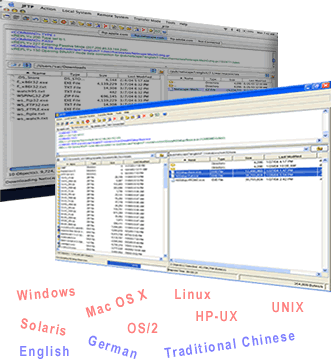Installing the software
Windows
- Make sure you have a recent Java JRE installed on your system. Gephi is compatible with Java 7 and 8 versions. Download Free Java here.
- After the download completes, run the installer and follow the steps.
Mar 23, 2016.
Mac OS X
- After the download completes, click on the downloaded .dmg file.
- Drag the gephi application in your Application folder.
Linux
- Java virtual machine free download - Parallels Desktop for Mac, OpenOSX WinTel, TestMachine, and many more programs. Run Windows and other operating systems simultaneously with Mac OS X.
- Install Java on Mac. Download the jre-8u65-macosx-x64.pkg file. Review and agree to the terms of the license agreement before downloading the file. Double-click the.pkg file to launch it; Double-click on the package icon to launch install Wizard; The Install Wizard displays the Welcome to Java installation screen.
- Update your distribution with the last official JRE 7 ir 8 packages.
- After the download completes, unzip and untar the file in a directory.
- Run it by executing ./bin/gephi script file.
Troubleshooting
Java 7 standard edition or newer required
Check you have Java properly installed on your system. If you're on Linux, you may provide the path to the jdk with ./bin/gephi --jdkhome $JAVA_HOME
JVM Creation failed
This error message is due to memory settings, see following section.
Download Java For Os X
Memory
Memory available to Gephi is determined by Java. Less or more memory can be allocated by configuring Gephi’s startup settings. If too less memory is allocated, Gephi will stop running when it reached the limit and you will loose your current work. If more memory than what the system is equipped with is set, Java will not be able to start and return “JVM Creation failed” message. By default, maximum memory is set to 512mo.
To modify memory settings, you need to edit gephi settings file. Modify the value after the -Xmx option to change the maximum heap space. For example, to use a heap size between 256 and 1024 MB, change the options to -Xms256m and -Xmx1024m. If you have Gephi open, you must close and reopen Gephi before new options take effect. On computers with 2GB of memory, you can set -Xmx1400 to get maximum performance.
How to edit gephi.conf:

- On Windows, go to the Gephi folder in Start menu and click on Startup Settings. Edit this file with Notepad or WordPad. Alternatively, go in C:Program Files (x86)Gephi 0.9etcgephi.conf and edit file manually.
- On Mac OS X, right-click on Gephi application icon and select Show Package Contents to open a new Finder window displaying a Contents folder. Open the Contents folder, and then open the Resources/gephi/etc folder, in which the gephi.conf file resides. Use TextEdit to edit the file.
- On Linux, go into your application directory and then into the etc folder. Edit the file with a text editor.
When multiple JRE or JDK are installed on the same machine, you can specifty to Gephi to use a particular path. Edit gephi.conf as described in the upper section, uncomment the jdkhome line and set the JRE or JDK path.
User files
Download Jvm Mac Os X2
Locate and delete gephi user directory to clean your installation.
- On Windows 2K/XP, user diretory is located in
C:Documents and SettingsusernameApplication Data.gephi - On Windows Vista/Seven/8/10, user directory is located in
C:UsersusernameAppDataRoaming.gephi - On Mac OS X, user directory is located in
/Users/username/Library/Application Support/gephi - On Linux, user diretory is located in
/home/username/.gephi
Jvm 1.8 Mac
The following are the system requirements for installing the JDK and the JRE on macOS:
Download Jvm Mac Os Xerox
Any Intel-based computer running macOS.
Administrator privileges.
You cannot install Java for a single user. Installing the JDK and JRE on macOS is performed on a systemwide basis for all users. Administrator privileges are required to install the JDK and JRE on macOS.
When you install the JDK, it also installs the JRE. However, the system will not replace the current JRE with a lower version.
To determine the current JRE version installed on your system, see Determining the JRE Version Installed on macOS. To install an earlier version of the JRE, you must first uninstall the current version. See Uninstalling the JRE on macOS.
When you install the JRE, you can install only one JRE on your system at a time. The system will not install a JRE that has an earlier version than the current version.
To determine the current JRE version installed on your system, see Determining the JRE Version Installed on macOS. To install an earlier version of the JRE, you must first uninstall the current version. See Uninstalling the JRE on macOS.
Note:
Installing a JRE from Oracle will not update
java -versionsymlinks or addjavato your path. To do this, you must install the JDK.